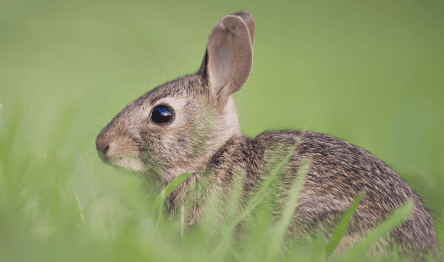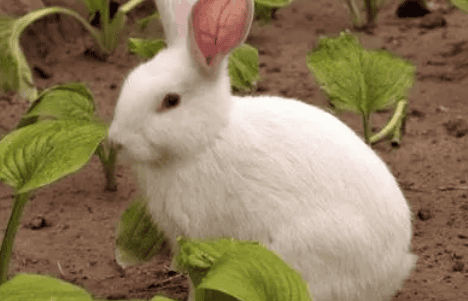Generally, novice rabbit owners raise such questions. Don’t be nervous if rabbits have this problem. Rabbits will undergo a physiological molt every spring and autumn, which is a normal phenomenon.

Rabbit hair loss can be divided into age-related hair loss, seasonal hair loss and pathological hair loss . Age-related moulting usually occurs between one and three months of age and between four and six months of age. Molting after six months of age is called seasonal molting. Rabbits undergo seasonal molts twice a year, from March to May in spring and from September to October in autumn. That is, when the daylight hours change from short to long or from long to short, rabbits will shed and moult. Seasonal molting usually occurs when the seasons change. This is the molting of rabbits in order to adapt to changes in environmental temperature.
Pathological hair loss: When rabbits suffer from certain diseases, local or systemic hair loss will occur due to malnutrition. This kind of hair loss will not be replaced by new hair, so it will appear. Alopecia areata can be distinguished from normal hair loss by careful observation.
The characteristics of rabbit molting will have different effects in different regions and seasons. Molting is also related to temperature changes. Molting consumes a lot of calories for rabbits. Therefore, it is necessary to pay attention to whether the rabbit is physically and mentally weak, and to improve the diet and enhance nutrition. Help rabbits moult as quickly as possible.
In spring and autumn, meat rabbits enter the golden breeding season, and enter the moulting period. They should be fed high-quality feed with high nutritional value, non-mouldy and non-deteriorating (appropriate tocopherol supplementation), and male rabbits should be fed , Breeding female rabbits should appropriately increase the feeding of concentrate and increase the protein content appropriately. The feeding amount of breeding female rabbits during pregnancy increases with the growth of the fetus; during the lactation period, high-quality refined, green, roughage and appropriate amounts of carrots and other vitamin A-rich feeds should be provided. It is best to feed once after 9 o'clock in the evening. Dry coarse ingredients. 2 to 3 days before and after giving birth, feed the female rabbit sulfonamide antibiotics or inject postpartum anti-inflammatory injections (such as cephalosporin, cephalosporin, oxytetracycline, enrofloxacin, penicillin, etc.) to prevent the female rabbit from mammary gland inflammation and xantheria in young rabbits. If the female rabbit has insufficient milk, you can use "lactation tablets" to induce lactation and increase the amount of green feed or supplement soy milk, rice soup and brown sugar water. Dihydropyridine is also a very good lactation product and is safe to use.

Breed male rabbits are fed carrots, raw eggs, peanut cakes, bean cakes, calcium hydrogen phosphate and other rich Feed containing vitamins and minerals can improve the semen quality of male rabbits. Cod liver oil and dihydropyridine can effectively improve the semen quality and are recommended. When starting to feed green feed, start with less and then more, and gradually increase the amount to avoid digestive tract diseases caused by overfeeding. On rainy days, the feeding proportion of dry roughage should be appropriately increased; green fodder cut after rain should be dried before feeding, and attention should be paid to the reasonable combination of bactericidal and stomachic drugs in the feed.

 扫一扫微信交流
扫一扫微信交流
发布评论